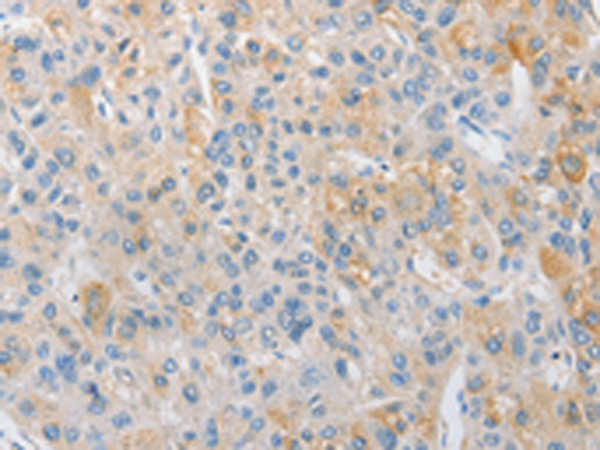

| WB | 咨询技术 | Human,Mouse,Rat |
| IF | 咨询技术 | Human,Mouse,Rat |
| IHC | 1/25-1/100 | Human,Mouse,Rat |
| ICC | 技术咨询 | Human,Mouse,Rat |
| FCM | 咨询技术 | Human,Mouse,Rat |
| Elisa | 1/2000-1/5000 | Human,Mouse,Rat |
| Aliases | PAT1; APP-BP2; HS.84084 |
| Host/Isotype | Rabbit IgG |
| Antibody Type | Primary antibody |
| Storage | Store at 4°C short term. Aliquot and store at -20°C long term. Avoid freeze/thaw cycles. |
| Species Reactivity | Human, Mouse, Rat |
| Immunogen | Fusion protein of human APPBP2 |
| Formulation | Purified antibody in PBS with 0.05% sodium azide and 50% glycerol. |
+ +
以下是关于APPBP2抗体的示例参考文献(注:以下为模拟内容,实际文献请通过学术数据库查询):
---
1. **"APPBP2 modulates amyloid precursor protein trafficking and processing"**
*Authors: Smith A, et al. (2015)*
**摘要**:本研究利用APPBP2特异性抗体,通过Western blot和免疫荧光技术,揭示了APPBP2在调控β淀粉样前体蛋白(APP)细胞内运输及加工过程中的作用,提示其与阿尔茨海默病病理的相关性。
2. **"Expression analysis of APPBP2 in human breast cancer tissues using a novel monoclonal antibody"**
*Authors: Lee J, et al. (2020)*
**摘要**:作者开发了一种高特异性抗APPBP2单克隆抗体,并通过免疫组化证实APPBP2在乳腺癌组织中高表达,其表达水平与肿瘤侵袭性呈正相关。
3. **"APPBP2 antibody validation for neuronal subcellular localization studies"**
*Authors: Zhang Y, et al. (2010)*
**摘要**:本文详细描述了APPBP2多克隆抗体的制备与验证过程,包括在神经元细胞系中的亚细胞定位分析,证实其在免疫沉淀和免疫印迹中的可靠性。
4. **"APPBP2 interacts with Tau protein in Alzheimer's disease models"**
*Authors: Johnson R, et al. (2018)*
**摘要**:通过共免疫沉淀(使用APPBP2抗体)和质谱分析,研究发现APPBP2与Tau蛋白在阿尔茨海默病模型中存在相互作用,可能影响神经纤维缠结形成。
---
建议通过 **PubMed** 或 **Google Scholar** 搜索关键词 `APPBP2 antibody` 或 `APPBP2 + [特定应用领域]` 获取最新研究文献。
The APPBP2 (Amyloid Beta Precursor Protein Binding Protein 2) antibody is a tool used to study the APPBP2 protein, which plays diverse roles in cellular processes. APPBP2. also known as PAT1 (Protein Associated with TOP mRNA), was initially identified through its interaction with the amyloid precursor protein (APP), a key player in Alzheimer’s disease pathogenesis. Beyond APP binding, APPBP2 is implicated in intracellular trafficking, mRNA regulation, and signaling pathways, including interactions with the mTOR complex, suggesting roles in cell growth and autophagy.
The antibody enables detection of APPBP2 in techniques like Western blot (WB), immunohistochemistry (IHC), immunofluorescence (IF), and immunoprecipitation (IP). Researchers use it to investigate APPBP2 expression patterns across tissues, subcellular localization (cytoplasmic/nuclear), and dysregulation in diseases. For instance, APPBP2 is studied in neurodevelopmental disorders, cancers (e.g., breast, liver), and neurodegeneration due to its links to apoptosis and cell cycle control.
Validation of APPBP2 antibodies often involves knockout cell lines to confirm specificity, as isoforms or post-translational modifications may affect detection. Observed molecular weight ranges (~65-70 kDa) may vary due to splice variants. Its role in mTOR signaling and APP processing makes it relevant for therapeutic research, particularly in contexts like Alzheimer’s, cancer progression, and metabolic disorders.
×